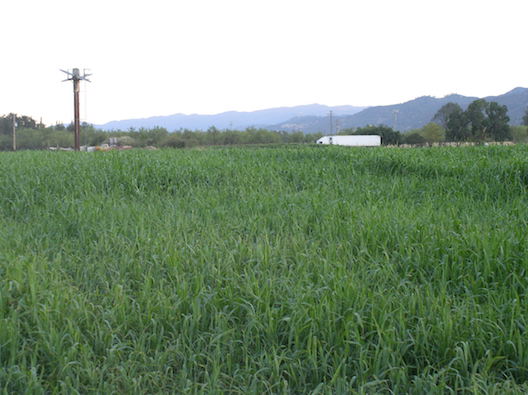No Funding for Healthy Soils or Water Use Efficiency in the Cap and Trade Budget Deal
Several weeks ago, California’s legislature made decisions on how to spend $1.5 billion out of the account that has been collected from our cap-and-trade program. To the dismay of a wide network of partners, the deal completely eliminated funding for the new Healthy Soils Program and Water Efficiency and Enhancement Program that had been funded by cap-and-trade dollars in the past. This is a huge setback for these trailblazing efforts.
The Healthy Soils Program was in its first year of funding for practices like the use of compost, cover crops, hedgerows and improved fertilizer management on farms and ranches. The funded practices all sequester carbon and reduce greenhouse gas emissions. In it’s first year of funding for these soil management practices (2017), this program will cost $7.4 million (a drop in the $1.5 billion budget).
The other program (acronym SWEEP) has been around since 2014 and in each year has received many more applicants for grants than it has been able to fund. Since 2014 the program has received over $60 million, all spent on irrigation management improvements that save water and energy while reducing greenhouse gas emissions. For more information on these programs.
Several things happened that resulted in the elimination of these important programs. In part, there was a deal made that favored conventional agricultural interests and left these programs out. The deal directed over $300 million towards agriculture (from both cap-and trade as well as other funds.) Upgrades to farm equipment, systems to address dairy methane emissions, food processor upgrades, and renewable energy projects, adding up to $160 million, came directly out of the cap-and-trade budget.
These decision-makers have dropped their focus from the goal of reducing greenhouse gases. Without a strategy that includes the soil and it’s capacity to sequester carbon, they are not likely to reach their CO2 reduction goals. Soil is a major factor as it is the second largest carbon pool after the oceans. With 40% to 50% of the world’s land mass devoted to crops and pasture, and many agricultural practices that release greenhouse gases, abandoning a land-based strategy is a big mistake and a big disappointment.
—Judith Redmond
This may look like a field of grass — and it is! But it is also a cover crop… At Full Belly, we grow Sudan Grass in the summertime because it is heat and drought tolerant and has an abundant root biomass which increases soil organic matter. Because cover cropping takes a field out of crop production, and may involve new management challenges, programs like the Healthy Soils Program are important in assisting farmers who want to adopt these important healthy soil and climate-friendly practices.

